
Fort Dauphin: The Gem of Southern Madagascar
Discover Fort Dauphin, where Madagascar's natural beauty meets rich cultural heritage, offering a perfect blend of adventure and relaxation.
Nestled between lush mountains and the Indian Ocean, Fort Dauphin (also known as Taolagnaro) is a treasure trove of natural beauty and rich history. This coastal city is endowed with a diverse landscape that ranges from pristine beaches to verdant rainforests, making it a paradise for nature lovers and adventure seekers alike. Fort Dauphin's history dates back to the 1500s when it was first settled by the Portuguese. The city later became a French colonial outpost, and remnants of this era can still be seen in its architecture and cultural influences. Today, Fort Dauphin is a melting pot of Malagasy and colonial heritage, offering a unique cultural experience to its visitors. The city's proximity to several national parks, such as Andohahela and Berenty Reserve, makes it an excellent base for exploring Madagascar's unique flora and fauna. Here, you can encounter lemurs, chameleons, and a variety of bird species in their natural habitats. For those interested in marine life, the surrounding waters are perfect for snorkeling and diving, teeming with colorful coral reefs and exotic marine creatures. Fort Dauphin also boasts vibrant local markets, where you can find everything from handcrafted souvenirs to fresh produce. Don't miss out on the local cuisine, which features a delightful mix of Malagasy and French flavors. Whether you're hiking through the mountains, lounging on the beach, or exploring the city's historical sites, Fort Dauphin offers an unforgettable experience that captures the essence of Madagascar.
Local tips in Fort Dauphin
- Visit the local markets early in the morning for the freshest produce and unique handicrafts.
- Hire a local guide when visiting national parks for a more informative and safe experience.
- Bring cash as credit card facilities are limited, especially in remote areas.
- Try the local seafood; it's fresh and often caught the same day.
- Be prepared for varied weather; pack both beachwear and light hiking gear.
Fort Dauphin: The Gem of Southern Madagascar
Nestled between lush mountains and the Indian Ocean, Fort Dauphin (also known as Taolagnaro) is a treasure trove of natural beauty and rich history. This coastal city is endowed with a diverse landscape that ranges from pristine beaches to verdant rainforests, making it a paradise for nature lovers and adventure seekers alike. Fort Dauphin's history dates back to the 1500s when it was first settled by the Portuguese. The city later became a French colonial outpost, and remnants of this era can still be seen in its architecture and cultural influences. Today, Fort Dauphin is a melting pot of Malagasy and colonial heritage, offering a unique cultural experience to its visitors. The city's proximity to several national parks, such as Andohahela and Berenty Reserve, makes it an excellent base for exploring Madagascar's unique flora and fauna. Here, you can encounter lemurs, chameleons, and a variety of bird species in their natural habitats. For those interested in marine life, the surrounding waters are perfect for snorkeling and diving, teeming with colorful coral reefs and exotic marine creatures. Fort Dauphin also boasts vibrant local markets, where you can find everything from handcrafted souvenirs to fresh produce. Don't miss out on the local cuisine, which features a delightful mix of Malagasy and French flavors. Whether you're hiking through the mountains, lounging on the beach, or exploring the city's historical sites, Fort Dauphin offers an unforgettable experience that captures the essence of Madagascar.
When is the best time to go to Fort Dauphin?
Iconic landmarks you can’t miss
Nahampoana Reserve
Explore the breathtaking beauty and rich biodiversity of Nahampoana Reserve, a tranquil haven in Madagascar that promises unforgettable nature experiences.
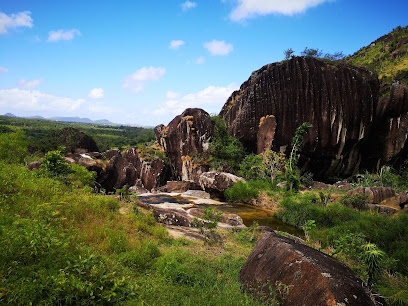
Le Nepenthes Hôtel
Discover comfort and tranquility at Le Nepenthes Hôtel, your perfect base for exploring the beauty of Taolagnaro, Madagascar.

Vokybe Lodging & Apartments
Experience the charm of Taolagnaro at Vokybe Lodging & Apartments, where comfort meets local culture and adventure awaits.
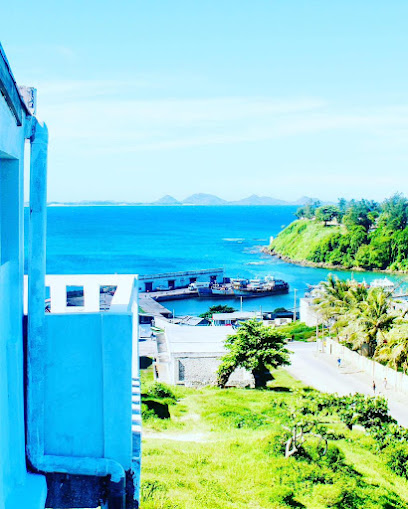
Domaine de la Cascade | Plantation Lansargues
Discover the enchanting landscapes and stunning waterfalls at Domaine de la Cascade, a nature preserve in Madagascar perfect for adventure seekers.
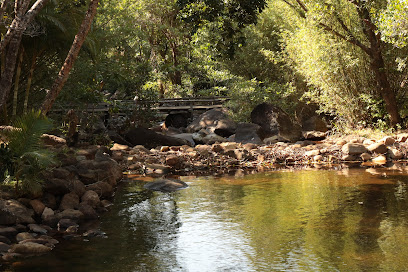
Sucre Sale
Discover tranquility at Sucre Sale, a charming coffee shop in Taolagnaro, where you can enjoy delicious brews and stunning coastal views.
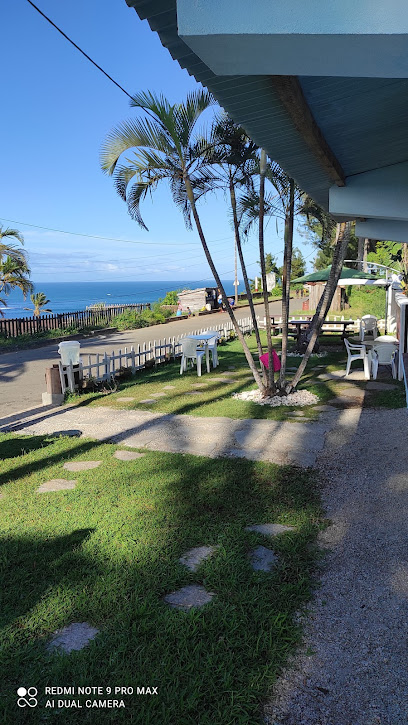
Dadamanga Tours Madagascar
Experience the best of Madagascar with Dadamanga Tours in Taolagnaro, offering personalized adventures and sustainable travel experiences.

Ankoba Beach
Discover the pristine beauty of Ankoba Beach in Taolagnaro, Madagascar. A paradise for relaxation, adventure, and breathtaking sunsets awaits.
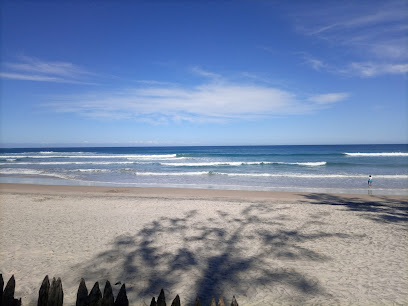
Aéroport de Tôlanaro
Experience the gateway to Madagascar's breathtaking beauty at Aéroport de Tôlanaro, your entry point to adventure in Taolagnaro.
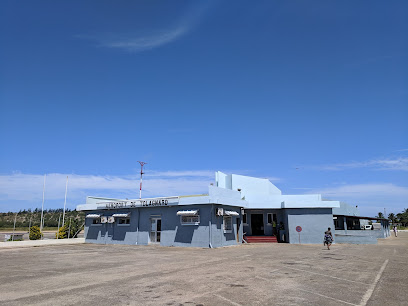
Ankoba Beach Hotel
Experience the tranquil beauty of Ankoba Beach Hotel in Taolagnaro, Madagascar, where stunning ocean views meet local charm and adventure.
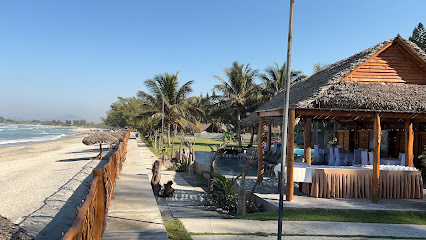
Tatirano Shop
Discover eco-friendly hydration at Tatirano Shop in Taolagnaro, where quality bottled water meets sustainable practices.
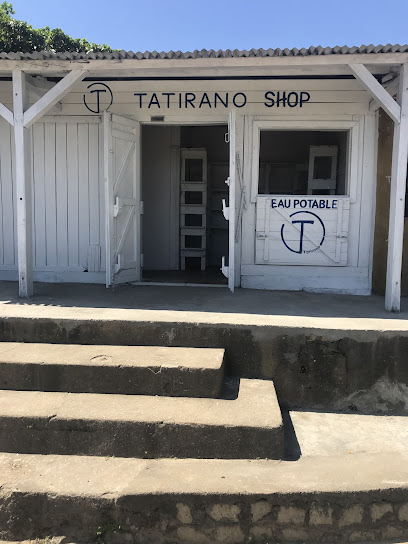
Pic St Louis
Experience the breathtaking beauty of Pic St Louis, a premier hiking destination in Taolagnaro, Madagascar, with stunning views and vibrant wildlife.

Unmissable attractions to see
Nahampoana Reserve
Explore the untouched beauty of Nahampoana Reserve in Madagascar, a haven for wildlife and nature lovers seeking adventure and tranquility.
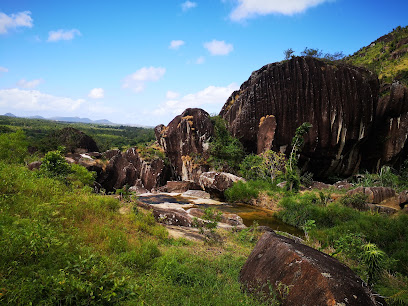
Domaine de la Cascade | Plantation Lansargues
Discover the tranquility of Domaine de la Cascade, a breathtaking nature preserve in Taolagnaro, Madagascar, perfect for nature lovers and adventurers alike.
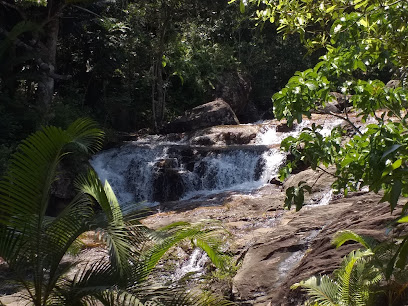
Ankoba Beach
Explore Ankoba Beach in Taolagnaro, Madagascar - a tranquil escape with stunning views, vibrant marine life, and rich local culture.
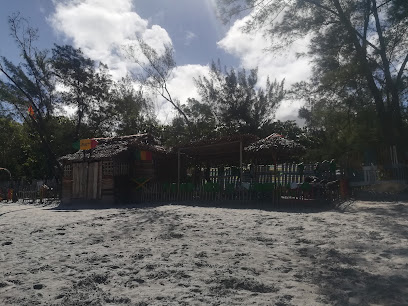
Sainte Luce Reserve
Explore the breathtaking natural beauty and unique biodiversity of Sainte Luce Reserve in Madagascar, a must-visit destination for nature lovers.
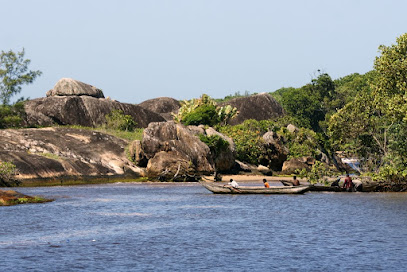
Cascade de Manantantely
Explore the stunning Cascade de Manantantely, a breathtaking waterfall in Madagascar's lush landscapes, perfect for nature lovers and adventurers.
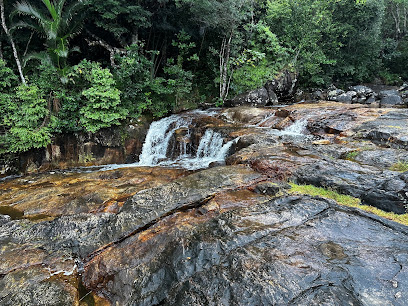
Le Jardin
Discover the serene beauty of Le Jardin in Taolagnaro, a lush garden showcasing Madagascar's unique flora and tranquil landscapes.
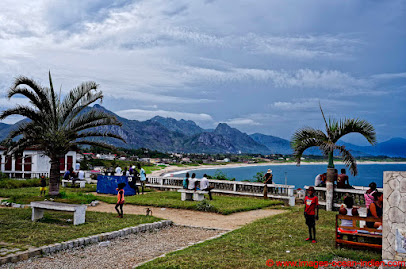
Saïadi Botanical Garden
Explore the serene Saïadi Botanical Garden in Antananarivo, a lush ecological park showcasing Madagascar's unique flora and fauna.
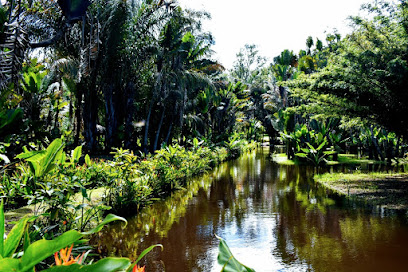
Plage lokaro
Experience the tranquil beauty of Plage Lokaro, a hidden gem in Marokoky, where sandy beaches meet crystal-clear waters in Madagascar.

Exactement ailleurs
Explore the serene beauty of Exactement Ailleurs in Toliara Province, Madagascar's hidden garden paradise, perfect for relaxation and nature lovers.
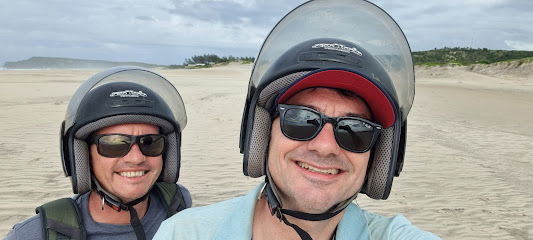
Evatra Seaside
Discover the tranquil beauty of Evatra Seaside in Madagascar, where pristine beaches meet azure waters for a perfect getaway.
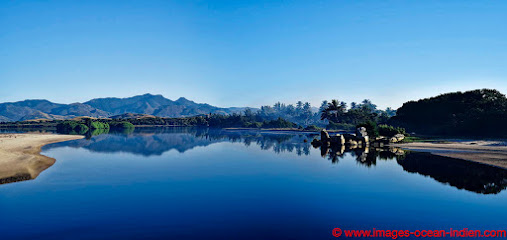
ANDRAHOMA
Explore Andrahoma, a breathtaking tourist attraction in Ranopiso, Madagascar, where nature meets culture in a stunning landscape.
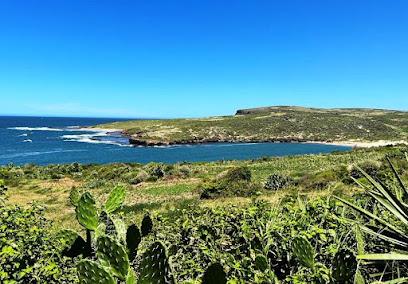
ANDRANARA RESERVE
Explore the untouched beauty of Andranara Reserve, a nature preserve in Taolagnaro, showcasing Madagascar's unique ecosystems and vibrant wildlife.

Design Parc
Discover the serene beauty and artistic allure of Design Parc in Taolagnaro, Madagascar, a perfect blend of nature and culture for every traveler.

Bevava beach
Discover the serene beauty of Bevava Beach in Madagascar, where pristine sands meet azure waters in a tranquil coastal paradise.
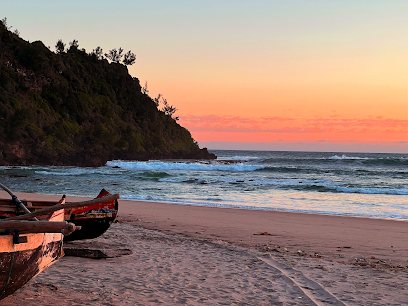
Cabane Ndraha
Experience the beauty and culture of Marokoky at Cabane Ndraha, a must-visit destination for nature lovers and cultural enthusiasts alike.
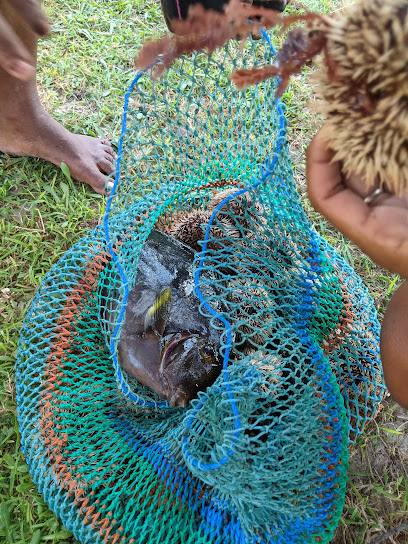
Essential places to dine
Restaurant Mirana
Experience authentic Malagasy cuisine at Restaurant Mirana in Taolagnaro – a culinary treasure offering delightful dishes in a charming setting.
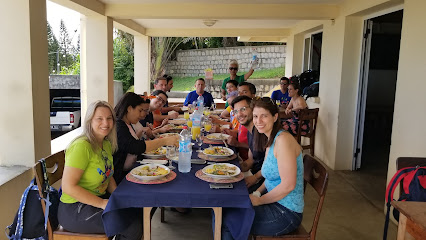
Hotel Le Dauphin
Discover the perfect blend of comfort and local cuisine at Hotel Le Dauphin in Taolagnaro, Madagascar.
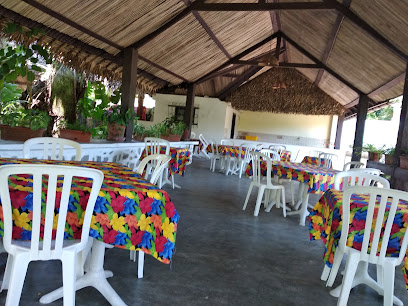
Chez Vivie
Experience authentic Malagasy cuisine at Chez Vivie in Taolagnaro – where local flavors meet warm hospitality.
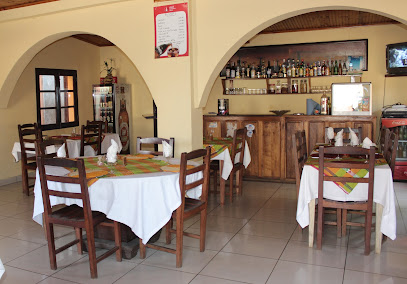
Chez Georges | La Reine du Sud
Experience authentic Malagasy cuisine at Chez Georges | La Reine du Sud in Taolagnaro - where flavor meets tradition.

L’Arrivage Ft Dauphin
Experience exquisite seafood at L’Arrivage Ft Dauphin in Taolagnaro – where fresh catches meet stunning ocean views.
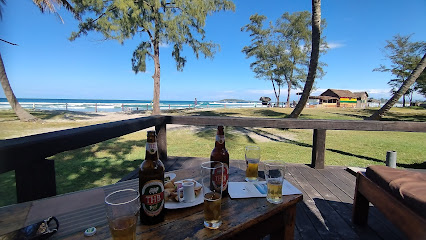
Club
Discover authentic Malagasy cuisine at this top-rated restaurant in Taolagnaro, where every dish tells a story.
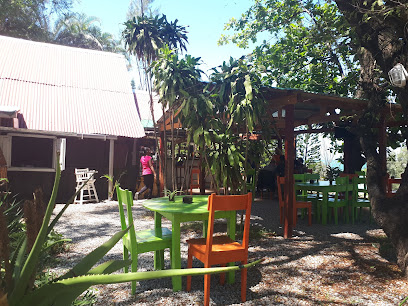
Mini Resto Mami - Jo
Savor fresh seafood in Taolagnaro at Mini Resto Mami - Jo, where local flavors meet coastal charm for an unforgettable dining experience.
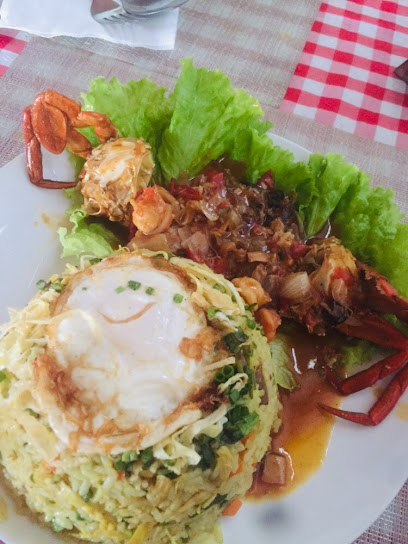
Rex Restaurant Pizzeria
Experience the delightful fusion of Italian and Malagasy cuisine at Rex Restaurant Pizzeria in Taolagnaro.
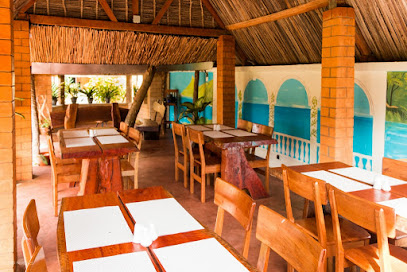
La Kabane Fort Dauphin-Tolagnaro 614
Experience the rich flavors of Madagascar at La Kabane in Fort Dauphin - where every dish tells a story.
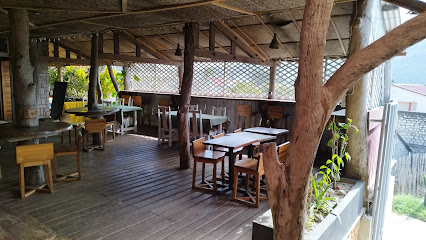
Chez Anita
Experience authentic Malagasy cuisine at Chez Anita in Taolagnaro – where local flavors meet cozy hospitality.
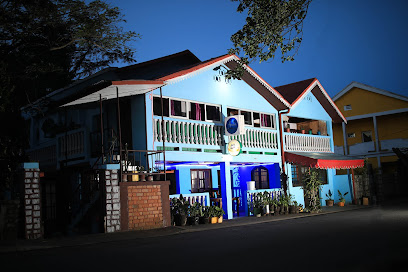
Saint Pas - Restaurant associatif
Experience authentic Malagasy cuisine at Saint Pas in Taolagnaro - where community meets culinary excellence.
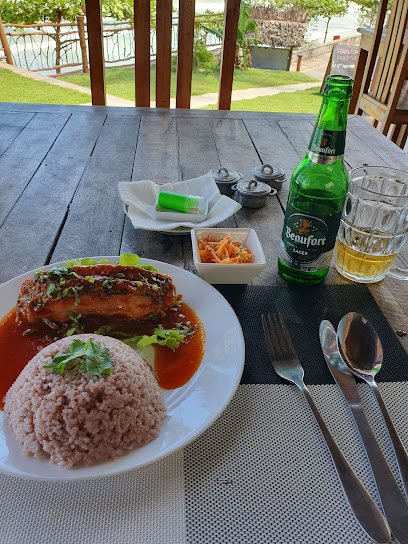
Pizza Express
Savor authentic Italian flavors at Pizza Express in Taolagnaro – where every slice tells a story.
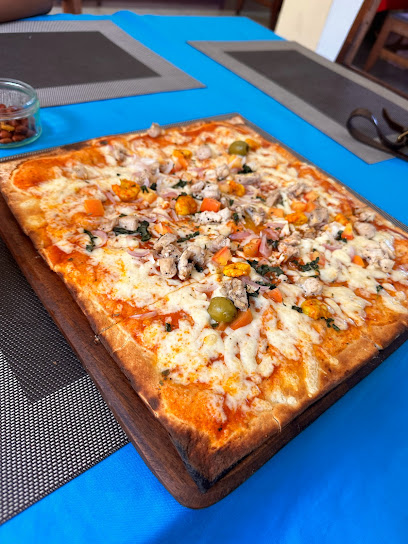
Lokaro Lodge Fort Dauphin
Experience authentic Malagasy hospitality at Lokaro Lodge, where culinary delights meet stunning landscapes in Fort Dauphin.

Yummy Snack
Discover authentic Malagasy flavors at Yummy Snack in Taolagnaro, where every dish tells a story and delights your taste buds.
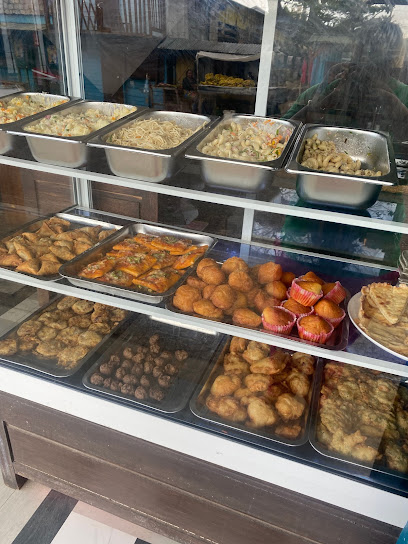
Le Spot - Libanona
Experience authentic Malagasy cuisine at Le Spot - Libanona in Taolagnaro; where every dish tells a story of Madagascar's rich culinary heritage.

Markets, malls and hidden boutiques
Sucre Sale
Discover Sucre Sale in Taolagnaro, Madagascar - your go-to coffee shop for exquisite brews and a cozy atmosphere amidst coastal charm.
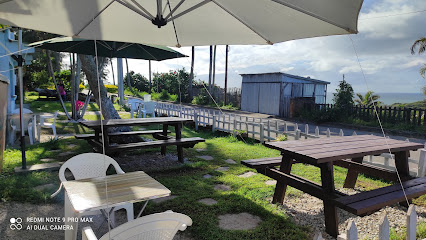
Marché De Tanambao
Discover the vibrant flavors of Madagascar at Marché De Tanambao, a bustling produce market in Taolagnaro, where local culture and fresh produce come alive.
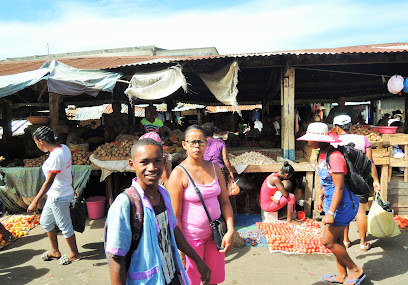
Prix Unique
Experience the vibrant local culture at Prix Unique Supermarket in Taolagnaro, where quality meets community in every aisle.

Fort Dauphin
Discover the flavors of Madagascar at Fort Dauphin, a grocery store that offers a taste of local culture and culinary delights.
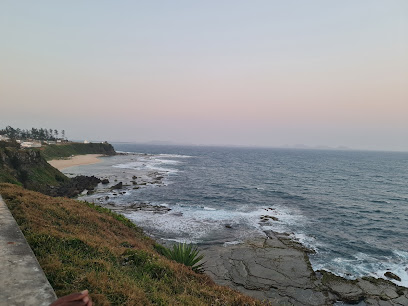
Boule de neige
Experience the rich flavors of Madagascar at Boule de Neige, Taolagnaro's charming coffee shop offering local brews and inviting ambiance.

Telma Shop Fort Dauphin
Stay connected in Fort Dauphin with Telma Shop, your trusted provider for mobile services and communication solutions in Madagascar.
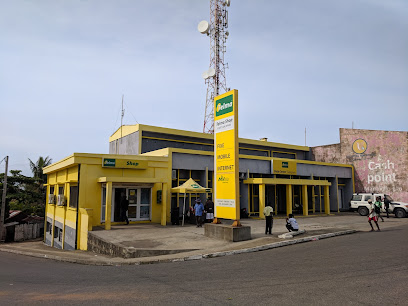
Kapassy Shop Annexe
Explore the vibrant Kapassy Shop Annexe in Taolagnaro for all your hardware needs and a taste of local craftsmanship in Madagascar.
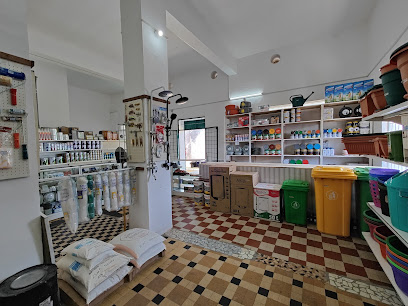
Age d Or
Explore local flavors at Age d Or in Taolagnaro, a grocery store offering fresh produce and unique Malagasy products for an authentic culinary experience.

B-STORE
Explore local craftsmanship at B-STORE, Taolagnaro's go-to destination for quality building materials and a taste of Madagascar's culture.

Second hand shop
Explore the unique charm of Taolagnaro's Second Hand Shop, where every item has a story waiting to be discovered.

Boule de Neige
Discover the sweet side of Taolagnaro at Boule de Neige, where artisan ice cream awaits to delight your senses.

Kapassy Shop
Experience the unique artistry and craftsmanship of Madagascar at Kapassy Shop, where iron wares come alive with cultural heritage.
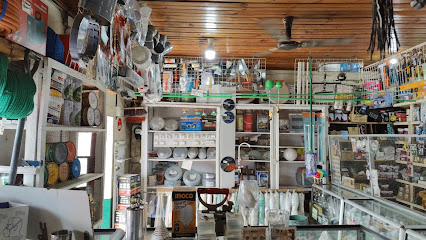
Faradofay Distribution sarl
Discover local treasures at Faradofay Distribution sarl in Taolagnaro, a vibrant store showcasing the essence of Madagascar's craftsmanship and culture.

Chez Jamil
Explore the vibrant grocery store Chez Jamil in Taolagnaro, where local flavors and fresh ingredients await every visitor.

Maison Tahery
Discover Maison Tahery, Taolagnaro's local hardware store offering tools, supplies, and a taste of Madagascar's vibrant community.

Essential bars & hidden hideouts
Hotel Le Dauphin
Experience the best of Taolagnaro at Hotel Le Dauphin, where comfort meets local culture in enchanting Madagascar.
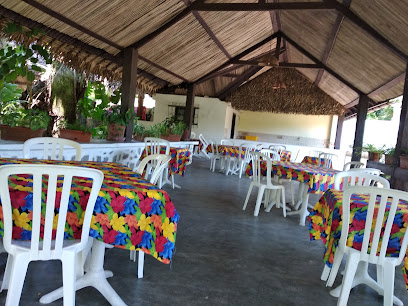
Restaurant Mirana
Experience the rich flavors of Madagascar at Restaurant Mirana, a culinary gem in Taolagnaro, offering a delightful array of local and international dishes.
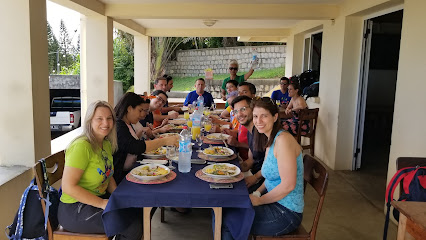
Chez Georges | La Reine du Sud
Discover the rich flavors of Madagascar at Chez Georges | La Reine du Sud, a top-rated restaurant in Taolagnaro offering a delightful dining experience.
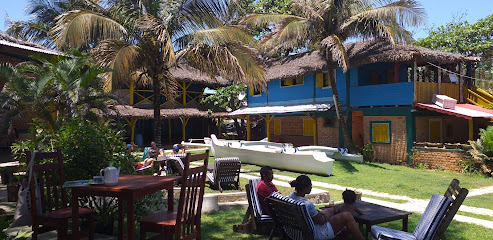
L’Arrivage Ft Dauphin
Discover L’Arrivage Ft Dauphin in Taolagnaro for a unique seafood dining experience that combines local flavors with stunning ocean views.
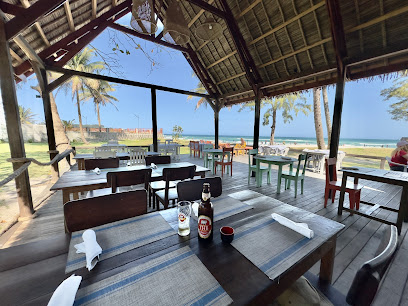
Le Tournesol Hôtel & Restaurant
Discover the charm of Taolagnaro at Le Tournesol Hôtel & Restaurant, where comfort meets authentic Malagasy cuisine in a stunning coastal setting.

Cafe Bar Colorado
Experience the vibrant nightlife at Cafe Bar Colorado in Taolagnaro, where cocktails, sports, and a welcoming atmosphere await.
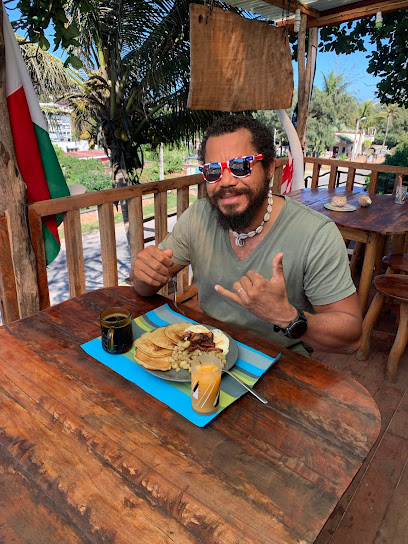
Rex Restaurant Pizzeria
Experience the flavors of Madagascar at Rex Restaurant Pizzeria in Taolagnaro, where traditional Italian meets local cuisine.
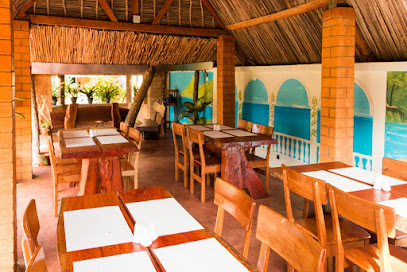
La Kabane Fort Dauphin-Tolagnaro 614
Experience the flavors of Madagascar at La Kabane in Fort Dauphin, a must-visit restaurant with stunning views and a warm atmosphere.
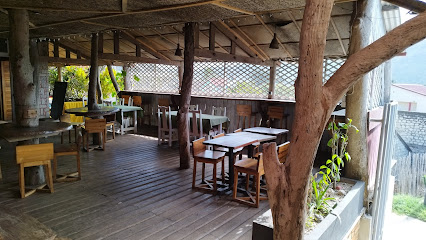
Chez Anita
Experience the charm of Taolagnaro at Chez Anita, where delicious Malagasy cuisine meets stunning views and warm hospitality.
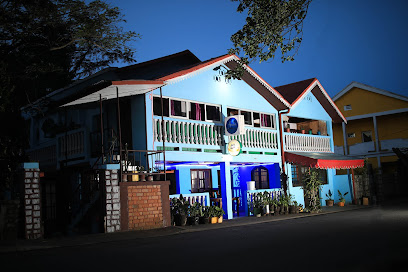
Surf's Up Bar, Fort-dauphin
Discover the vibrant nightlife at Surf's Up Bar in Fort-Dauphin, Madagascar, where karaoke and local culture collide for an unforgettable evening.
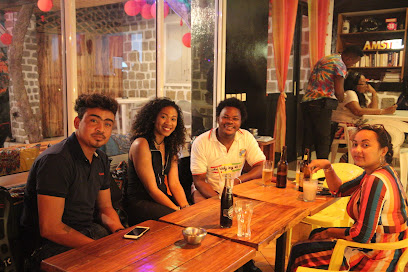
Les chasseurs fort dauphin
Experience the best of fast food in Taolagnaro at Les Chasseurs Fort Dauphin, where local flavors meet quick service in a vibrant setting.

Talakeso Beach Bar Libanona
Discover the enchanting Talakeso Beach Bar Libanona, where stunning views meet delicious local cuisine in the heart of Madagascar's coastline.

Gaufres Fort Dauphin
Discover the delightful flavors of Gaufres Fort Dauphin, a charming tea house in Taolagnaro, specializing in delicious waffles and local teas.

Local Phrases
-
- HelloSalama
[Sa-la-ma] - GoodbyeVeloma
[Ve-lo-ma] - YesEny
[Eny] - NoTsia
[Tsia] - Please/You're welcomeAzafady
[A-za-fa-dy] - Thank youMisaotra
[Mi-sa-ou-tra] - Excuse me/SorryMiala tsiny
[Mia-la tsi-ny] - How are you?Inona ny vaovao?
[I-no-na ny va-ou-va-o?] - Fine. And you?Tsara. Ianao?
[Tsa-ra. Ia-nao?] - Do you speak English?Miteny Anglisy ve ianao?
[Mi-te-ny Ang-li-sy ve ia-nao?] - I don't understandTsy nandeha
[Tsi nan-de-ha]
- HelloSalama
-
- I'd like to see the menu, pleaseMilaza ny sakafo, azafady
[Mi-la-za ny sa-ka-fo, a-za-fa-dy] - I don't eat meatTsy mihinam-bary aho
[Tsi mi-hi-nam-ba-ri a-ho] - Cheers!Santé!
[San-té!] - I would like to pay, pleaseMilaza ny vola, azafady
[Mi-la-za ny vo-la, a-za-fa-dy]
- I'd like to see the menu, pleaseMilaza ny sakafo, azafady
-
- Help!Fanantenana!
[Fa-na-ten-ta-na!] - Go away!Miverina!
[Mi-ve-ri-na!] - Call the Police!Mangataka ny polisy!
[Man-ga-ta-ka ny po-li-sy!] - Call a doctor!Mangataka dokotera!
[Man-ga-ta-ka do-ko-te-ra!] - I'm lostNaharitra aho
[Na-ha-ri-tra a-ho] - I'm illMihinam-bary aho
[Mi-hi-nam-ba-ri a-ho]
- Help!Fanantenana!
-
- I'd like to buy...Milaza hanoka...
[Mi-la-za ha-no-ka...] - I'm just lookingMitady fotsy aho
[Mi-ta-dy fot-sy a-ho] - How much is it?Ohatrinona izany?
[O-ha-tsi-no-na i-za-ny?] - That's too expensiveMahalala be izany
[Ma-ha-la-la be i-za-ny] - Can you lower the price?Azafady mankaiza ny vola?
[A-za-fa-dy man-kai-za ny vo-la?]
- I'd like to buy...Milaza hanoka...
-
- What time is it?Firy izao ora izao?
[Fi-ry i-zao o-ra i-zao?] - It's one o'clockIreo iray
[I-re-o i-ray] - Half past (10)Alina sy folo
[A-li-na sy fo-lo] - MorningMaraina
[Ma-rai-na] - AfternoonAntoandro
[An-to-an-dro] - EveningHariva
[Ha-ri-va] - YesterdayOmaly
[O-ma-ly] - TodayAnio
[A-ni-o] - TomorrowRahampitso
[Ra-ham-pi-tso] - 1Iray
[I-ray] - 2Roa
[Ro-a] - 3Telo
[Te-lo] - 4Efatra
[E-fa-tra] - 5Dimy
[Di-my] - 6Enina
[E-ni-na] - 7Fito
[Fi-to] - 8Valo
[Va-lo] - 9Sivy
[Si-vy] - 10Folo
[Fo-lo]
- What time is it?Firy izao ora izao?
-
- Where's a/the...?Aiza ny...
[Ai-za ny...] - What's the address?Inona ny adiresy?
[I-no-na ny a-di-re-sy?] - Can you show me (on the map)?Azafady manome anareo (amin'ny saritany)?
[A-za-fa-dy mano-me a-na-re-o (a-mi-n'ny sa-ri-ta-ny)?] - When's the next (bus)?Aiza ny taksi manaraka?
[Ai-za ny tak-si ma-na-ra-ka?] - A ticket (to ....)Fitsipika (ho any ...)
[Fit-si-pi-ka (ho a-ny ...)]
- Where's a/the...?Aiza ny...
History of Fort Dauphin
-
Fort Dauphin, known locally as Taolagnaro, was founded in 1643 by the French East India Company. The fort was named in honor of the Dauphin of France, the heir apparent to the French throne. It served as an important outpost for French colonial ambitions in the Indian Ocean and became a center for trade and exploration in the region.
-
During the 17th century, Fort Dauphin was a significant hub for French colonists. The fort's strategic location enabled it to become a key point for trading spices, ebony, and slaves. Despite its potential, the early years of the colony were fraught with difficulties, including conflicts with local Malagasy tribes and challenges in maintaining supplies from France.
-
In the late 17th and early 18th centuries, Fort Dauphin saw visits from Portuguese and Dutch explorers. These encounters often led to skirmishes and competition for control over the region. The fort's position made it a sought-after prize for European powers eager to dominate Indian Ocean trade routes.
-
By the late 18th century, the French faced numerous challenges in maintaining Fort Dauphin. Repeated conflicts with local Malagasy tribes, disease, and difficulties in supply lines led to the fort's decline. In 1674, the French abandoned Fort Dauphin, and it fell into disrepair until later efforts to re-establish control in the 19th century.
-
In the 19th century, the French renewed their interest in Madagascar, and Fort Dauphin saw a resurgence. The fort became part of the larger colonial efforts as France solidified its control over the island. This period marked the beginning of significant French infrastructure projects, including roads and administrative buildings, which aimed to integrate Fort Dauphin into the broader colonial framework.
-
Following Madagascar's independence from France in 1960, Fort Dauphin transitioned from a colonial outpost to a vibrant Malagasy town. The region has since developed its own unique blend of local culture and historical heritage. Today, Fort Dauphin is known for its scenic beauty, rich history, and as a gateway to the natural wonders of southeastern Madagascar.
-
Fort Dauphin is a melting pot of cultures, reflecting its complex history. The town is home to the Antanosy people, who have preserved their unique traditions and customs despite centuries of foreign influence. Visitors can experience local music, dance, and crafts, which offer a glimpse into the rich cultural tapestry of the region.
Fort Dauphin Essentials
-
Fort Dauphin, also known as Tolagnaro, is located in the southeastern region of Madagascar. The nearest airport is Marillac Airport (FTU), which has domestic flights connecting to Antananarivo, the capital city. International travelers can fly into Ivato International Airport (TNR) in Antananarivo and then take a connecting flight to Fort Dauphin. Alternatively, you can opt for a combination of road travel and flights, though the journey by road can be long and challenging due to the condition of the roads.
-
Once in Fort Dauphin, you have several transportation options. Taxis are readily available and are a convenient way to get around the town. For short distances, tuk-tuks (auto-rickshaws) are also common. Public buses, known as 'taxi-brousse,' connect Fort Dauphin to nearby towns but may not adhere to a strict schedule. Renting a car is another option, but be prepared for driving on rough and sometimes unpaved roads.
-
The official currency in Madagascar is the Malagasy Ariary (MGA). While some hotels, restaurants, and shops in Fort Dauphin accept credit cards, it is advisable to carry cash, especially when visiting smaller establishments or rural areas. ATMs are available in Fort Dauphin, but they can occasionally run out of cash or be out of service, so plan accordingly.
-
Fort Dauphin is generally safe for tourists, but it's essential to take standard safety precautions. Avoid walking alone at night, especially in poorly lit areas. Be cautious in crowded places and keep an eye on your belongings. Areas such as Ambinanibe and Anosy might have higher instances of petty crimes targeting tourists. Always use reputable transportation options and avoid carrying large sums of money or valuable items.
-
In case of emergency, dial 117 for the police or 124 for medical emergencies. The local hospital in Fort Dauphin can handle minor medical issues, but for serious conditions, you may need to be evacuated to Antananarivo. It's highly recommended to have travel insurance that covers medical emergencies and evacuation. Pharmacies are available for over-the-counter medications.
-
Fashion: Do dress modestly, especially in rural areas and when visiting religious sites. Avoid wearing revealing clothing. Religion: Do respect local customs and traditions. Always remove your shoes when entering religious sites. Public Transport: Do be respectful and give up your seat to elderly passengers. Don’t eat or drink on public transport. Greetings: Do greet people with a handshake. A slight bow of the head is also a sign of respect. Eating & Drinking: Do try local delicacies and accept food offerings graciously. Don’t refuse hospitality, as it is considered impolite.
-
To experience Fort Dauphin like a local, visit the local markets such as the Anosy Market where you can buy fresh produce and traditional Malagasy goods. Engage with locals, as they are often friendly and willing to share stories about the town's history and culture. Don’t miss visiting the Nahampoana Reserve and the Libanona Beach. For a unique experience, take a hike to Pic Saint Louis for breathtaking views of the surrounding area.
Nearby Cities to Fort Dauphin
-
Things To Do in Mandrare River
-
Things To Do in Manakara
-
Things To Do in Toliara
-
Things To Do in Fianarantsoa
-
Things To Do in Ifaty
-
Things To Do in Antsirabe
-
Things To Do in Antananarivo
-
Things To Do in Andasibe
-
Things To Do in Toamasina
-
Things To Do in Mahajanga
-
Things To Do in Majunga
-
Things To Do in Le Morne
-
Things To Do in Bel Ombre
-
Things To Do in Inhambane
-
Things To Do in Chamarel









